From 16 to 19 May 2022, general Co-Chair, Radu Prodan, successfully presented the relevance of Cloud-Edge-IoT at CCGrid2022 conference in Taormina, Italy.
Find out more here.
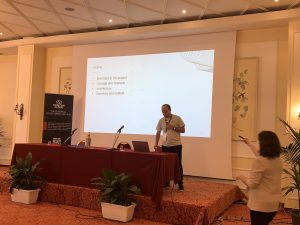
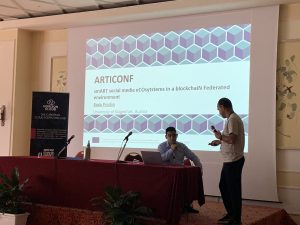
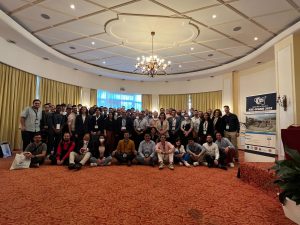
From 16 to 19 May 2022, general Co-Chair, Radu Prodan, successfully presented the relevance of Cloud-Edge-IoT at CCGrid2022 conference in Taormina, Italy.
Find out more here.



2022 IEEE International Conference on Multimedia and Expo (ICME)
July 18-22, 2022 | Taipei, Taiwan
Vignesh V Menon (Alpen-Adria-Universität Klagenfurt), Hadi Amirpour (Alpen-Adria-Universität Klagenfurt), Mohammad Ghanbari (School of Computer Science and Electronic Engineering, University of Essex, Colchester, UK), and Christian Timmerer (Alpen-Adria-Universität Klagenfurt)
Abstract:
In live streaming applications, typically a fixed set of bitrate-resolution pairs (known as bitrate ladder) is used for simplicity and efficiency in order to avoid the additional encoding run-time required to find optimum resolution-bitrate pairs for every video content. However, an optimized bitrate ladder may result in (i) decreased storage or delivery costs or/and (ii) increased Quality of Experience (QoE). This paper introduces a perceptually-aware per-title encoding (PPTE) scheme for video streaming applications. In this scheme, optimized bitrate-resolution pairs are predicted online based on Just Noticeable Difference (JND) in quality perception to avoid adding perceptually similar representations in the bitrate ladder. To this end, Discrete Cosine Transform(DCT)-energy-based low-complexity spatial and temporal features for each video segment are used. Experimental results show that, on average, PPTE yields bitrate savings of 16.47% and 27.02% to maintain the same PSNR and VMAF, respectively, compared to the reference HTTP Live Streaming (HLS) bitrate ladder without any noticeable additional latency in streaming accompanied by a 30.69% cumulative decrease in storage space for various representations.
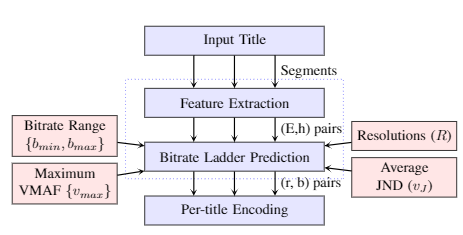
Architecture of PPTE
The kick-off meeting of the “5G-KärntnerFog” Project took place on April, 21st, 2022 at Klagenfurt University. The purpose of this first meeting was primarily the definition of work structures, work packages, and getting to know each partner region. The project partners consist of the following institutions: ITEC (Lead), FH Kärnten, and Siplan.
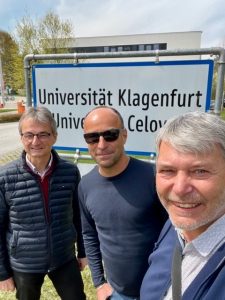
The 13th ACM Multimedia Systems Conference (ACM MMSys 2022)
June 14–17, 2022 | Athlone, Ireland
Reza Shokri Kalan (Digiturk Company, Istanbul), Reza Farahani (Alpen-Adria-Universität Klagenfurt), Emre Karsli (Digiturk Company, Istanbul), Christian Timmerer (Alpen-Adria-Universität Klagenfurt), and Hermann Hellwagner (Alpen-Adria-Universität Klagenfurt)
Over-the-Top (OTT) service providers need faster, cheaper, and Digital Rights Management (DRM)-capable video streaming solutions. Recently, HTTP Adaptive Streaming (HAS) has become the dominant video delivery technology over the Internet. In HAS, videos are split into short intervals called segments, and each segment is encoded at various qualities/bitrates (i.e., representations) to adapt to the available bandwidth. Utilizing different HAS-based technologies with various segment formats imposes extra cost, complexity, and latency to the video delivery system. Enabling an integrated format for transmitting and storing segments at Content Delivery Network (CDN) servers can alleviate the aforementioned issues. To this end, MPEG Common Media Application Format (CMAF) is presented as a standard format for cost-effective and low latency streaming. However, CMAF has not been adopted by video streaming providers yet and it is incompatible with most legacy end-user players. This paper reveals some useful steps for achieving low latency live video streaming that can be implemented for non-DRM sensitive contents before jumping to CMAF technology. We first design and instantiate our testbed in a real OTT provider environment, including a heterogeneous network and clients, and then investigate the impact of changing format, segment duration, and Digital Video Recording (DVR) window length on a real live event. The results illustrate that replacing the transport stream (.ts) format with fragmented MP4 (.fMP4) and shortening segments’ duration reduces live latency significantly.
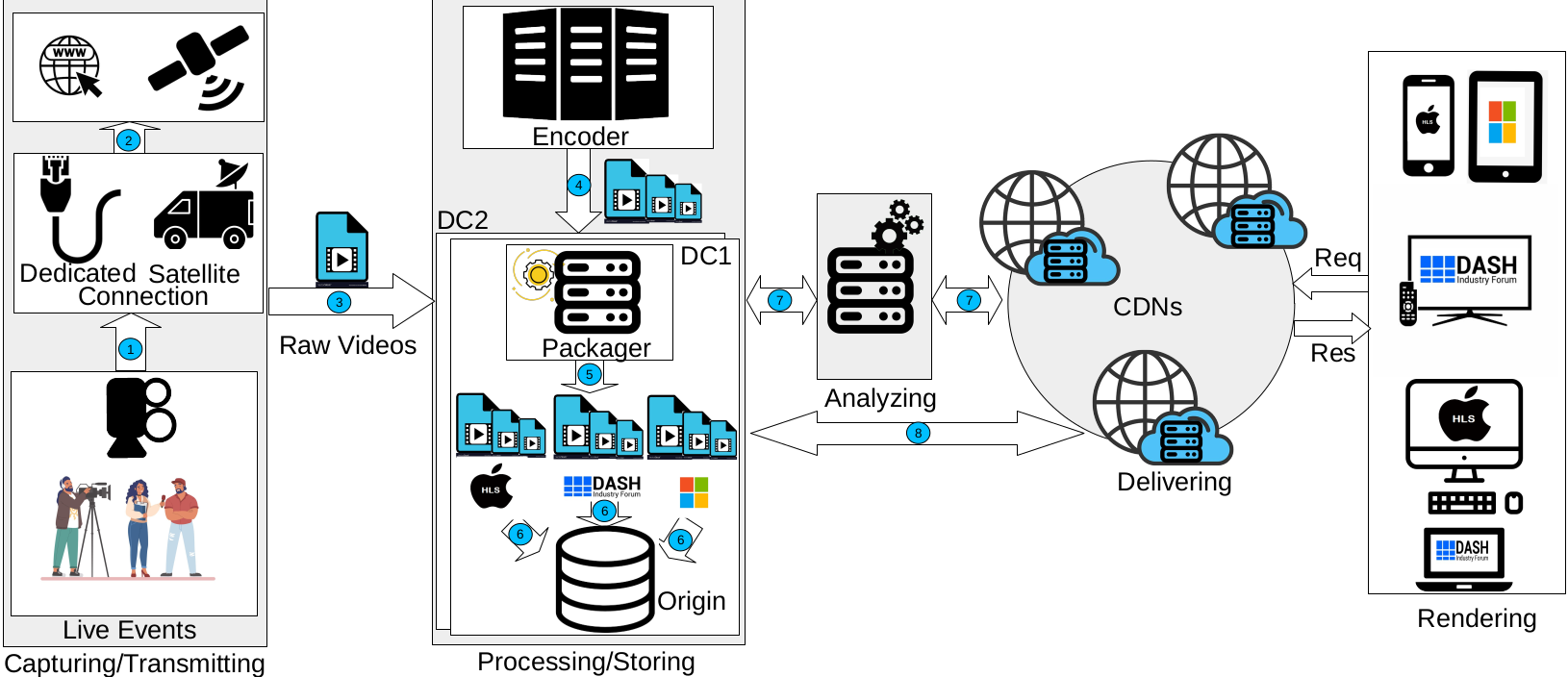
Keywords: HAS, DASH, HLS, CMAF, Live Streaming, Low Latency
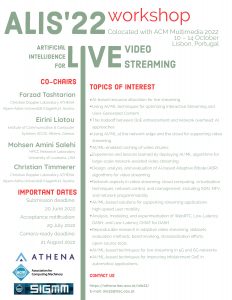
March 01-03, 2022 | Denver, CO, USA
After running as an independent event for several years, 2022 was the first year where Mile-High Video Conference (MHV) was organized by the ACM Special Interest Group on Multimedia (SIGMM). ACM MHV is a unique forum for participants from both industry and academia to present, share, and discuss innovations and best practices from multimedia content production to consumption.
This year, MHV hosted around 270 on-site participants and more than 2000 online participants from academia and industry. Five ATHENA members travelled to Denver, USA, to present two full papers and four short papers in MHV 2022.



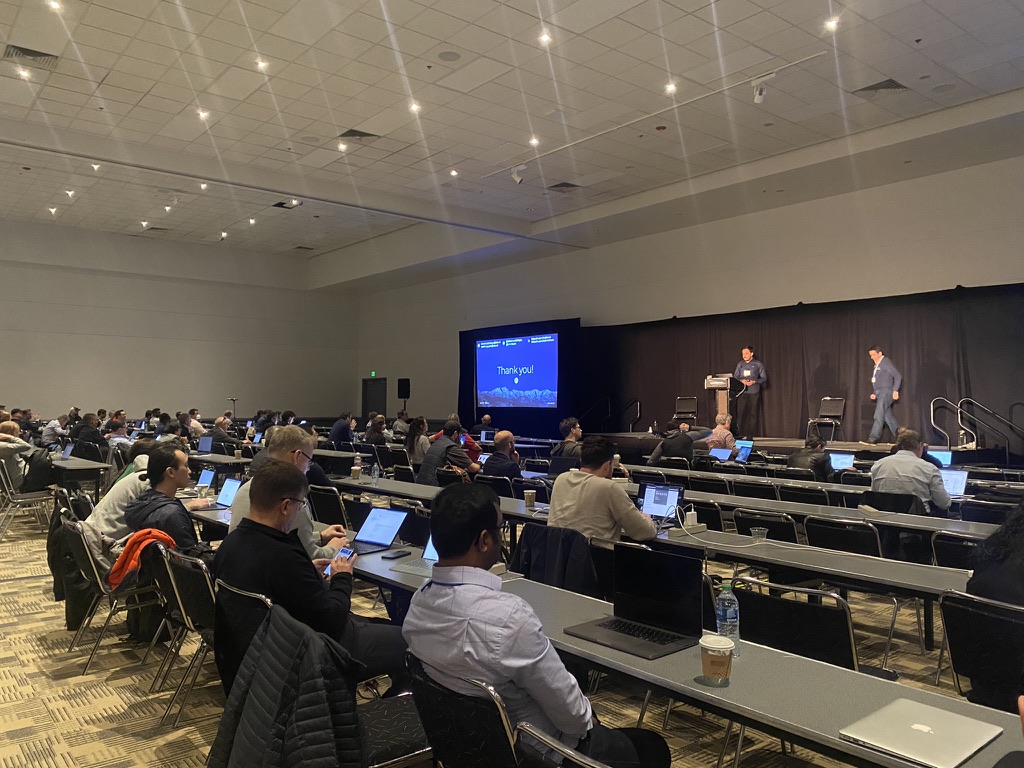
Here is a list of full papers presented in MHV:
Super-resolution Based Bitrate Adaptation for HTTP Adaptive Streaming for Mobile Devices: The advancement of mobile hardware in recent years made it possible to apply deep neural network (DNN) based approaches on mobile devices. This paper introduces a lightweight super-resolution (SR) network deployed at mobile devices and a novel adaptive bitrate (ABR) algorithm that leverages SR networks at the client to improve the video quality. More …
Take the Red Pill for H3 and See How Deep the Rabbit Hole Goes: With the introduction of HTTP/3 (H3) and QUIC at its core, there is an expectation of significant improvements in Web-based secure object delivery. An important question is what H3 will bring to the table for such services. To answer this question, we present the new features of H3 and QUIC, and compare them to those of H/1.1/2 and TCP. More …
Here is a list of short papers presented in MHV:
RICHTER: hybrid P2P-CDN architecture for low latency live video streaming: RICHTER leverages existing works that have combined the characteristics of Peer-to-Peer (P2P) networks and CDN-based systems and introduced a hybrid CDN-P2P live streaming architecture. [PDF]
CAdViSE or how to find the sweet spots of ABR systems: CAdViSE provides a Cloud-based Adaptive Video Streaming Evaluation framework for the automated testing of adaptive media players. [PDF]
Video streaming using light-weight transcoding and in-network intelligence: LwTE reduces HTTP Adaptive Streaming (HAS) streaming costs by enabling lightweight transcoding at the edge. [PDF]
Efficient bitrate ladder construction for live video streaming: This paper introduces an online bitrate ladder construction scheme for live video streaming applications using Discrete Cosine Transform (DCT)-energy-based low-complexity spatial and temporal features. [PDF]
Project Lead: H. Hellwagner, Ch. Timmerer
Abstract: Immersive telepresence technologies will have game-changing impacts on interactions amongst individuals or with non-human objects (e.g. machines), in cyberspace with blurred boundaries between the virtual and physical world. The impacts of this technology are expected to range in a variety of vertical sectors, including education and training, entertainment, healthcare, manufacturing industry, etc. The key challenges include limitations of both the application platform and the underlying network support to achieve seamless presentation, processing, and delivery of immersive telepresence content at a large scale. Innovative design, rigorous validation, and testing exercises aim to fulfill the key technical requirements identified such as low-latency communication, high bandwidth demand, and complex content encoding/rendering tasks in real-time. The industry-leading SPIRIT consortium will build on the existing TRL4 application platforms and network infrastructures developed by the project partners, aiming to address key technical challenges and further develop all major aspects of telepresence technologies to achieve targeted TRL7. The SPIRIT Project will focus its innovations in network-layer, transport-layer, application/content-layer techniques, as well as security and privacy mechanisms to facilitate the large-scale operation of telepresence applications. The project team will develop a fully distributed, interconnected testing infrastructure across two geographical sites in Germany and UK, allowing large-scale testing of heterogeneous telepresence applications in real-life Internet environments. The network infrastructure will host two mainstream application
environments based on WebRTC and low-latency DASH. In addition to the project-designated use case scenarios, the project team will test a variety of additional use cases covering heterogeneous vertical sectors through FSTP participation.
Elsevier Computer Communications journal
Alireza Erfanian (Alpen-Adria-Universität Klagenfurt), Farzad Tashtarian (Alpen-Adria-Universität Klagenfurt), Christian Timmerer (Alpen-Adria-Universität Klagenfurt), and Hermann Hellwagner (Alpen-Adria-Universität Klagenfurt).
Abstract: Recent advances in embedded systems and communication technologies enable novel, non-safety applications in Vehicular Ad Hoc Networks (VANETs). Video streaming has become a popular core service for such applications. In this paper, we present QoCoVi as a QoE- and cost-aware adaptive video streaming approach for the Internet of Vehicles (IoV) to deliver video segments requested by mobile users at specified qualities and deadlines. Considering a multitude of transmission data sources with different capacities and costs, the goal of QoCoVi is to serve the desired video qualities with minimum costs. By applying Dynamic Adaptive Streaming over HTTP (DASH) principles, QoCoVi considers cached video segments on vehicles equipped with storage capacity as the lowest-cost sources for serving requests.
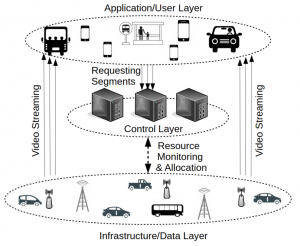 We design QoCoVi in two SDN-based operational modes: (i) centralized and (ii) distributed. In centralized mode, we can obtain a suitable solution by introducing a mixed-integer linear programming (MILP) optimization model that can be executed on the SDN controller. However, to cope with the computational overhead of the centralized approach in real IoV scenarios, we propose a fully distributed version of QoCoVi based on the proximal Jacobi alternating direction method of multipliers (ProxJ-ADMM) technique. The effectiveness of the proposed approach is confirmed through emulation with Mininet-WiFi in different scenarios.
We design QoCoVi in two SDN-based operational modes: (i) centralized and (ii) distributed. In centralized mode, we can obtain a suitable solution by introducing a mixed-integer linear programming (MILP) optimization model that can be executed on the SDN controller. However, to cope with the computational overhead of the centralized approach in real IoV scenarios, we propose a fully distributed version of QoCoVi based on the proximal Jacobi alternating direction method of multipliers (ProxJ-ADMM) technique. The effectiveness of the proposed approach is confirmed through emulation with Mininet-WiFi in different scenarios.
Every minute, more than 500 hours of video material are published on YouTube. These days, moving images account for a vast majority of data traffic, and there is no end in sight. This means that technologies that can improve the efficiency of video streaming are becoming all the more important. This is exactly what Hadi Amirpourazarian is working on in the Christian Doppler Laboratory ATHENA at the University of Klagenfurt. Read the full article here.
